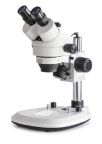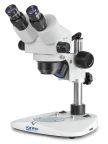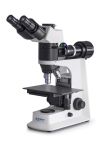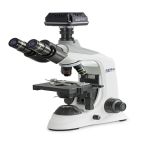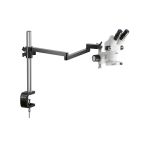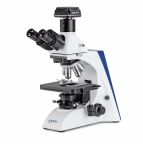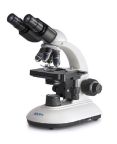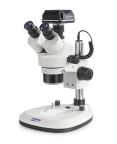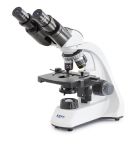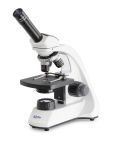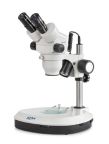Microscopes
Microscopes are magnifying optical instruments used to study objects that are too small to view with the naked human eye, instead placed in a slide to be viewed through the microscope. Microscopes can magnify objects to hundreds or thousands of times their original size, allowing the user to make detailed observations. While microscopes were initially predominantly used for chemical and medical applications, their uses are now incredibly broad and span numerous fields. They are used in forensic science, geology, botany, pharmaceuticals, and quality control applications among many others. You can find out more in our microscopes guide.
RS offers a wide range of high-quality microscopes to suit various applications, from precision scientific research to industrial inspection and educational use. Our collection includes trusted brands like Kern, known for their advanced optical systems; Dino-Lite, specialists in portable digital microscopy; Bresser, offering user-friendly models and RS PRO, delivering reliable and cost-effective solutions. Whether you need stereo microscopes, digital microscopes, or compound microscopes, our selection ensures precise imaging and performance tailored to your needs.
Key Types of Microscope
- Optical Microscopes: These are the most common type of microscope. Optical microscopes work by using light and a lens or series of lenses to magnify a sample. It can be as simple as a single lens working as a magnifying glass, or a compound microscope where a system of lenses increases the magnification to a higher resolution.
- USB digital microscopes are compact, portable and can plug directly into your laptop or PC. They do not feature eyepieces, but display the image onscreen for you. These are ideal for image capture and many come with their own bespoke software.
- Electron Microscopes use beams of electrons and electron lenses to produce an image of the sample that is being magnified. Electron microscopes have a far greater resolution and can show greater magnification than an optical microscope. Electron microscopes can be further split down into the SEM (Scanning Electron Microscopes) and TEM (Transmission Electron Microscopes). SEMs return a 3D image in black and white, while TEMs return a 2D view.
- **Stereo Microscopes **are optical microscopes designed to provide a three-dimensional view of a specimen at relatively low magnifications. Unlike traditional compound microscopes, which use a single optical path to produce a flat, 2D image, stereo microscopes use two separate optical paths. This design allows each eye to see the specimen from slightly different angles, resulting in a 3D stereoscopic effect.
Popular Searches
Related links
- Dino-Lite AF7515MZTL USB 2.0 Digital Microscope 10 → 140X Magnification
- Dino-Lite AM4013MT USB Digital Microscope 200X Magnification
- Dino-Lite AM4113T USB Digital Microscope 200X Magnification
- Dino-Lite AM4113TL USB Digital Microscope 20 → 90X Magnification
- Dino-Lite AM4815ZTL USB Digital Microscope 10 → 140X Magnification
- Dino-Lite AD4113ZTL USB Digital Microscope 20 → 90X Magnification
- Dino-Lite AM4113T-FVW USB Digital Microscope 200X Magnification
- Dino-Lite AM4815ZT USB Digital Microscope 20 → 220X Magnification


